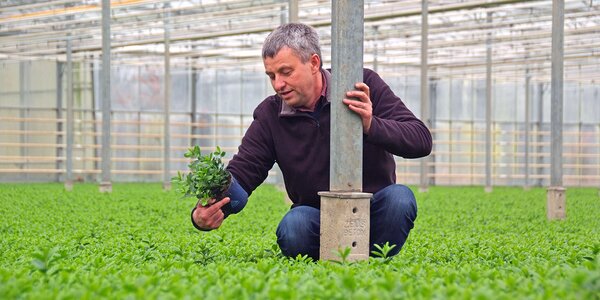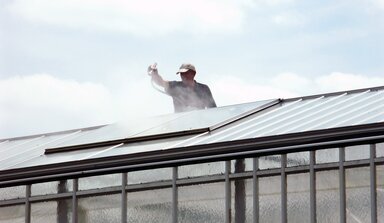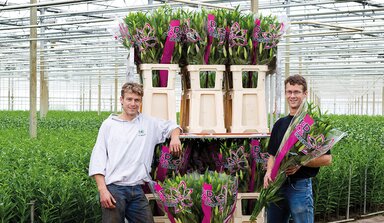ReduSol with pigment protects young Azaleas
Young Azaleas don’t like a lot of light. Therefore Mardenkro devised a shading system that mixes ReduSol with a black pigment to bring the young plants through the cuttings phase. “They get off to a good start. And because ReduSol is easy to remove from the roof they receive sufficient light in the winter,” says Piet Ravelingien manager of nursery ID’Flor, of Moerbeke-Waas, the Netherlands.
ID’Flor grows high quality Azaleas and focuses on the top end of the market with its branded homebred cultivars, Hortinno. To maintain the high standard each part of the production process has to run perfectly. The company has three production locations including the propagation site at Moerbeke which has 4 ha of glass and 4 ha outside. Here cuttings are taken from the plants. Then they are rooted and grown on until they come into bud. After that they are moved to another location or to a special nursery where they are forced to come into flower.
“Cuttings are taken from Azaleas in the summer period: five cuttings per pot which is covered with plastic. Rooting takes about eight weeks. During this time the radiation is very high so if you don’t use a screen the shoots can burn within half an hour,” says Ravelingien. “Even a shading screen isn’t enough to reduce the radiation. Previously we used to apply a very thick layer of whitewash; it looked like paint. It wasn’t very practical. The whitewash wasn’t easy to remove either so we lost incoming light in the winter, which didn’t help the quality. We need a lot of light for them to grow further.”

Piet Ravelingien
ReduSol plus pigment
Mardenkro devised a solution to solve these problems; ReduSol mixed with a black pigment. It is a custom-made coating system, especially developed for Azalea cuttings. De Ceuster applies the coating; further the upper layer is covered in a thin white layer to prevent the glass becoming too hot.
Ravelingien: “The coating reflects three quarters of the radiation. We want to maintain a pot temperature of 22-24°C during the summer. This doesn’t always happen of course, but if it gets above 30°C we have a big problem. Then they grow very slowly or they don’t root at all. Also, we see some slight burning. Previously the temperature easily rose above the critical limit. This is now a lot better and therefore we achieve better results with the cuttings.”
Easily removable
The coating is applied to the roof about mid May. Providing the cuttings have rooted, the first series of plants are transferred in August from the cuttings greenhouse to an area covered with ReduSol without pigment so that the become accustomed to the light. The later series remain in the cuttings house. The coating is removed around the middle of September. “Spraying once with ReduClean is sufficient. The rain completely washes the coating away. Compared with the past it costs a lot less labour to remove it. It is removed from the roof much faster and there aren’t any remnants left over. The glass is clear again,” he says.
As a result the plants receive more light in the winter. “They grow better and they are less susceptible to diseases because they get sufficient light.”
Satisfied
A new system always has some teething problems. “We first had to find the right dose and proportion of ReduSol to pigment. Once, when the pigment was changed, we had to start all over again. Also the conditions under which it is applied are very precise. It took some searching but we are satisfied with the result.”

